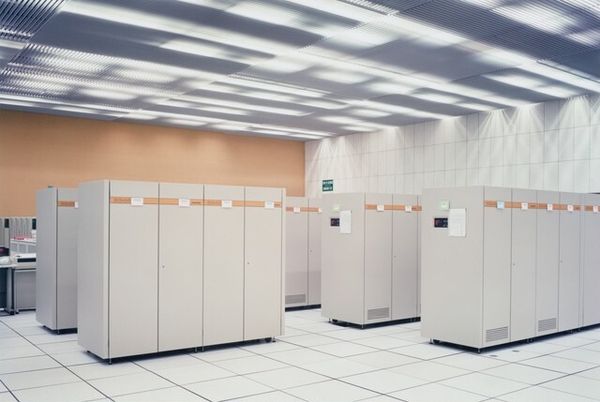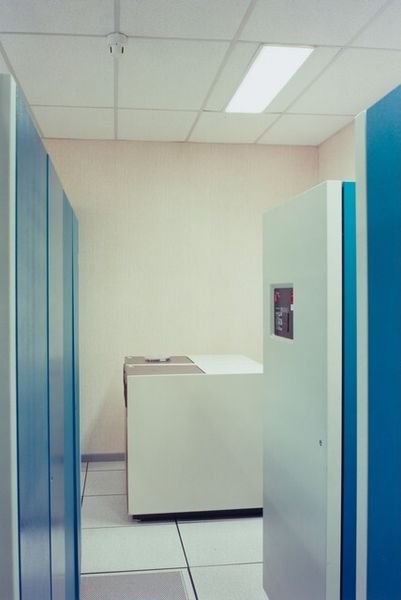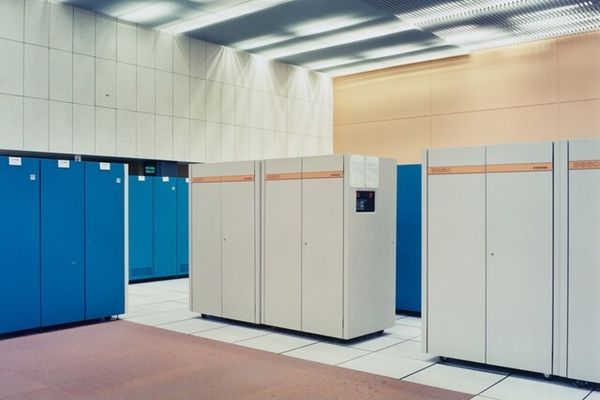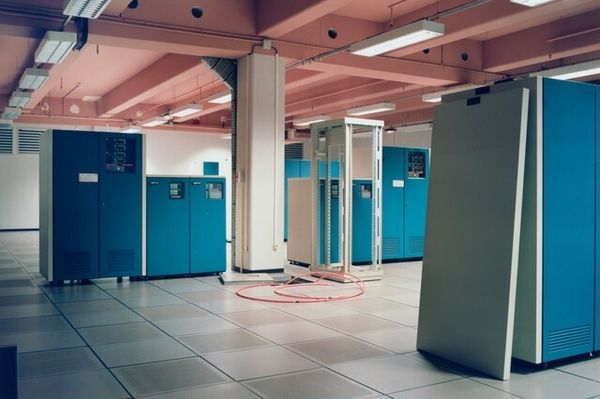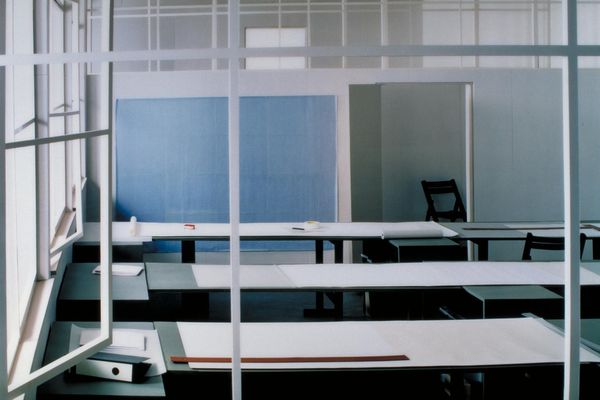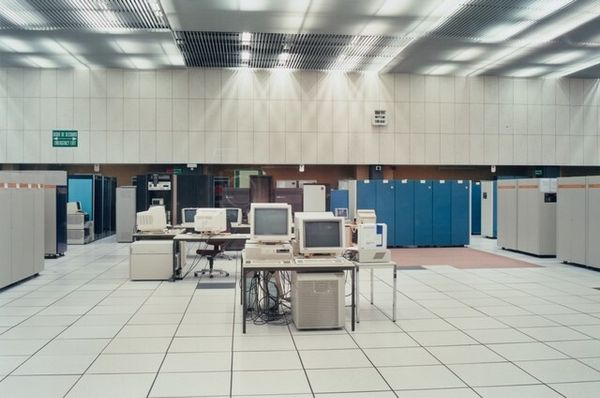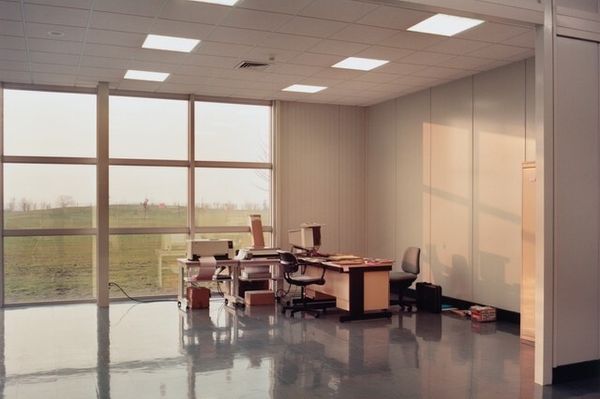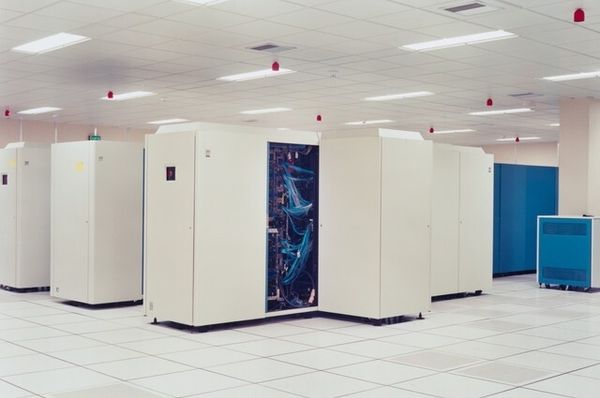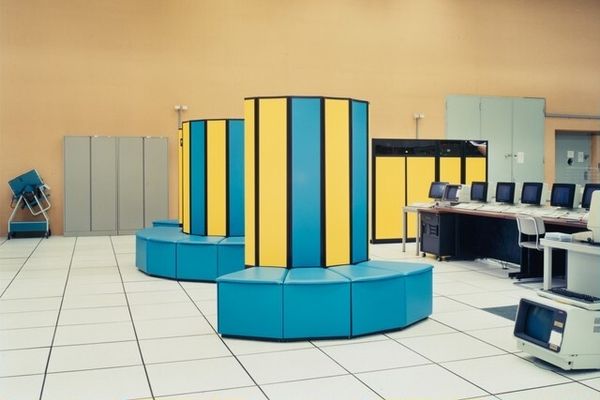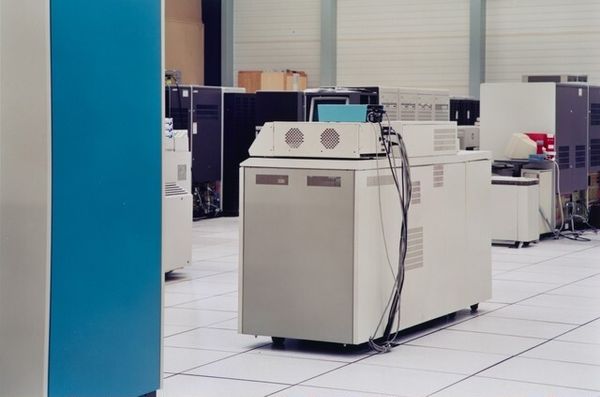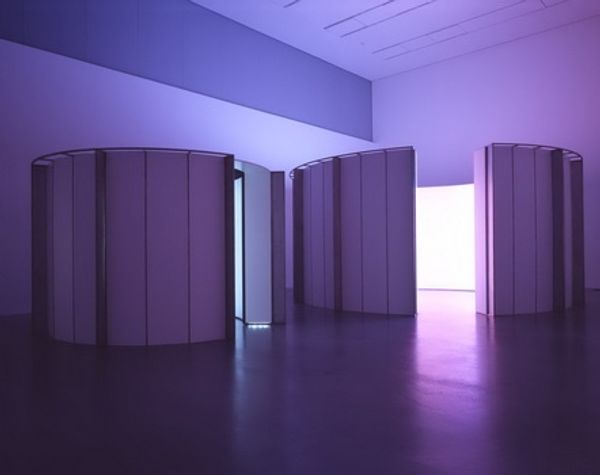
Centre Européen pour la Recherche Nucléaire, Geneva, Switzerland Possibly 1989 - 2006
0:00
0:00
photography
#
contemporary
#
conceptual-art
#
photography
#
geometric
Dimensions: image: 17.7 × 26.5 cm (6 15/16 × 10 7/16 in.) sheet: 28.1 × 35.5 cm (11 1/16 × 14 in.)
Copyright: National Gallery of Art: CC0 1.0
Curator: This photograph by Lewis Baltz, possibly taken between 1989 and 2006, documents the Centre Européen pour la Recherche Nucléaire in Geneva, Switzerland. It's part of a series examining the architecture of technological and scientific spaces. What are your initial thoughts? Editor: Utilitarian is the first word that comes to mind. It's the coldness, the pure functionality of the room. That almost aggressive repetition of form and color. Curator: Right, Baltz's work often highlighted the disjunction between our advanced technology and the kind of spaces that are designed to hold it. It brings up a lot of interesting points about our relationship with the technology, gender roles, and race issues prevalent with this scientific discovery. Editor: True, but it’s more than that, I think. Considering Baltz's focus on documenting sites shaped by late capitalism, what narratives do you think are being told by this architecture itself? How do the structures we build influence our thoughts? Curator: The use of the photographic medium here, focusing on those repeated modules. It makes me think of Foucault’s discussions about the architecture of control and surveillance and its relation to bodies—who designs these systems? Whose work populates these halls? How do the structures contain their users, reflecting historical oppressions of certain types of persons, women, or persons of color for instance? Editor: Absolutely. These rooms aren’t “neutral” – they reflect the social and power structures of the time, or the values of who ordered the space in the first place. Do you see his style as critiquing institutional architecture, or just presenting it? Curator: I'd argue both. He meticulously documents the scene without explicit commentary, which inherently exposes the ideology embedded in the architecture itself. Through composition and subject matter, we are asked to question those relationships between technology, gender and power. Baltz isn't telling us what to think. Editor: Agreed. There's a quiet power in showing the things we’d otherwise gloss over. Even something as supposedly straightforward as an office building can speak volumes. Curator: It truly makes you re-evaluate how we relate to these physical environments, as they silently exert so much control. Editor: I agree entirely. A thought provoking and, dare I say, unsettling piece!
Comments
No comments
Be the first to comment and join the conversation on the ultimate creative platform.
